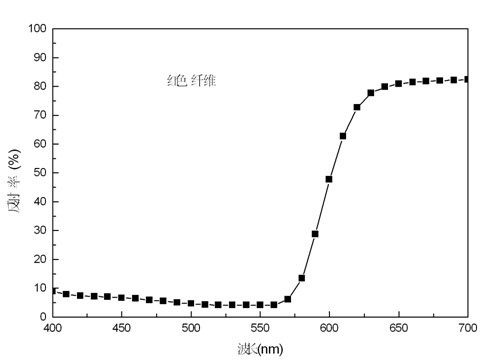Production method of regenerated cellulose fiber and cotton blended colored yarns
A technology of regenerated cellulose and production method, applied in the field of yarn production, can solve the problems of inability to go to market, large waste and high production cost
- Summary
- Abstract
- Description
- Claims
- Application Information
AI Technical Summary
Problems solved by technology
Method used
Image
Examples
Embodiment 1
[0060] According to the ratio of red: yellow: natural color cotton: black = 1:1:7.8:0.2, the fiber distribution and color matching are carried out, and the cotton distribution and its weighing equipment are used to quantitatively feed the A104 type flat carding machine; the carding machine is carded and clustered Finally, it becomes a sliver with a certain mixing degree, and the fixed weight is 20g / 5m. The draw frame chooses the second draw frame, and the fixed weight of the cooked sliver is 20g / 5m. The cooked sliver is drafted 8 times on the roving frame to obtain a roving, and the fixed weight is 5g / 10m. The roving is drafted 27 times on the spinning frame to obtain a spun yarn with a fineness of 18.5tex (32 English counts).
Embodiment 2
[0062] According to the ratio of red: blue: natural color cotton: black = 1:1:7:1, the fiber distribution and color matching are carried out, and the cotton distribution and its weighing equipment are used to quantitatively feed the A104 type flat carding machine; the carding machine is carded, After bundling, it becomes a sliver with a certain mixing degree, and the fixed weight is 20g / 5m. The draw frame chooses the second draw frame, and the fixed weight of the cooked sliver is 20g / 5m. The cooked slivers are spun yarns with a fineness of 50tex (13 English counts) on the rotor spinning machine.
Embodiment 3
[0064] According to the ratio of yellow: blue: natural color cotton: black = 3:2:4:1, the fiber distribution and color matching are carried out, and the cotton distribution and its weighing equipment are used to quantitatively feed the A104 type flat carding machine; the carding machine is carded, After bundling, it becomes a sliver with a certain mixing degree, and the fixed weight is 20g / 5m. The draw frame chooses the second draw frame, and the fixed weight of the cooked sliver is 20g / 5m. The cooked slivers are spun yarns with a fineness of 50tex (13 English counts) on the rotor spinning machine.
PUM
| Property | Measurement | Unit |
|---|---|---|
| wavelength | aaaaa | aaaaa |
| wavelength | aaaaa | aaaaa |
| wavelength | aaaaa | aaaaa |
Abstract
Description
Claims
Application Information
 Login to View More
Login to View More - R&D
- Intellectual Property
- Life Sciences
- Materials
- Tech Scout
- Unparalleled Data Quality
- Higher Quality Content
- 60% Fewer Hallucinations
Browse by: Latest US Patents, China's latest patents, Technical Efficacy Thesaurus, Application Domain, Technology Topic, Popular Technical Reports.
© 2025 PatSnap. All rights reserved.Legal|Privacy policy|Modern Slavery Act Transparency Statement|Sitemap|About US| Contact US: help@patsnap.com



